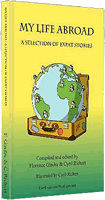Getting around Buenos Aires and the rest of Argentina

Living among 40 million people in Argentina (13 million in Buenos Aires) means that getting around town can take a lot of time, patience and know-how. Thankfully, there is an extensive and functional transportation system in place to help us newbies out.
Plane
- Ezeiza/Ministro Pistarini International Airport (IATA: EZE ICAO: SAEZ) is the main international airport for Argentina.
- Aeroparque Jorge Newbery (IATA: AEP ICAO: SABE) is the domestic airport in Buenos Aires. The airport is situated on opposite side of the city from Ministro Pistarini International Airport so travel between the airports takes time.
Shuttle buses run between the two airports and travel time can vary depending on traffic. Buses and taxis are also available. The fixed rate for a taxi from Ezeiza international airport to Buenos Aires is 130 pesos, the rate from the Jorge Newbery domestic airport to town is 40 pesos.
Passengers leaving Ezeiza Airport no longer have to pay the "departure tax" of US$29 (US$ 8 to Uruguay and domestic flights) after check-in. This fee is assessed on passport holders of the USA, Canada and Australia and is now included in the prices of the tickets.
You can get to some of Argentina's main cities via plane (Buenos Aires, Mendoza, Ushuaia) and Aerolineas Argentinas is by far one of the best airlines we have ever flown with. The staff is among some of the friendliest we have found and very accommodating. The food we received on these flights is always hot and very delicious! They even offer wine and whiskey during (and after) each meal for those who need an extra nudge to get sleep on those longer flights. For those budget travelers, though, this may not be the best option and you can just as effectively travel across Argentina in an Autobus.
Taxi
Since this is the most expensive option, we don’t travel this way very much, but there are thousands available! Like in the US they’re yellow, have a roof light and charge by meters. The meters start around 5.8 pesos and then go up based on time.
An exception to this are taxis from the airport which charge you a flat rate up front and take you directly to certain places in the city. There are many “unofficial taxis” waiting on the curb for “rich” tourists, so we highly recommend going to an official booth inside the airport to ensure you won’t get ripped off.
Bus
Before you even think about getting on a bus, buy a “Guia T”. It’s an extremely complex guide to the bus lines and the best city map we’ve seen yet. The busses are a cheap and semi-direct way to travel, but very hectic for newbies and the drivers are NOT a cheery bunch.
The country is well connected by bus. The Buenos Aires bus system runs nearly 24 hours and you can go anywhere, anytime for just $1.25 pesos per trip! Make sure to have plenty of monedas (coins) though, as the ticket machines on the bus don’t take bills.
AutoBus
While buses may take longer to travel across Argentina in, it is a much better way to see the varied landscape that the country possesses and in many cases is just as comfortable. We found that Andesmar and viaBariloche were the best buses available and offered all the amenities we needed. You may discover many other bus companies but after speaking with other travelers, some of these companies have been notorious for stealing items out of baggage during routine rest stops. With Andesmar and viaBariloche, we opted for reclining chairs on the overnight buses and were also given great food on these trips as well...including a glass of wine! On one trip with Andesmar, they even started a game of bingo with the prize being a bottle of local Malbec. In our opinion, this is really the best way to see the country and can cost you sometimes half of what it would to fly the same distance.
Subte (subway)
By far our favorite way to travel around Buenos Aires. It costs less than the busses at just $1.10 pesos per ride, avoids all traffic, and is super easy to navigate. Though not as extensive as the bus system, there are 5 lines (A-E) that go to all major areas of the city. You can buy multiple trips at once and insert your pre-paid card into automated turnstiles just like in NYC.
The main downfall is the subte only runs from to 8am to 10pm, so you can’t take it home from dinner or a club. Also, you DO NOT want to get on any subte line between 8-10 am or 5-7pm during the week as it is jam-packed. I mean jammed, like you can’t breathe and have to literally fight your way on and off.
Walking
We walk everywhere. There are tons of pedestrian crosswalks regulated by walk and don’t walk signs, but beware, drivers really don’t care who has the right-of-way here.
Thankfully there are ample sidewalks, but they’re not kept up like in the US, so you really have to watch your step. Shops, kioskos (mini-marts), cafes and bars line the sidewalks and are great to pop into for a beer, water or to just get out of the heat.
By Jeff Didra and Brittany Asseff, two wine and travel-seeking twenty-somethings who have made it our mission to go through as many wine regions in the world as we can.
http://www.vinovagabonds.com
twitter: @vinovagabonds
- Buenos Aires: Weekend in Buenos Aires: what to do?
- Argentina: EasyExpat.com is looking for networkers/helpers for...
- Buenos Aires: EasyExpat.com is looking for networkers/helpers for...
- Buenos Aires: EasyExpat.com recherche des animateurs pour notre...
- Argentina: EasyExpat.com recherche des animateurs pour notre...
- My Life Abroad -
A selection of expat stories

"A fun compulsive read!"
J. Matcham, Amazon
"I strongly advise people ready to live abroad to read this book!"
Patrice, Amazon

 Driving: Life in the fast lane
Driving: Life in the fast lane